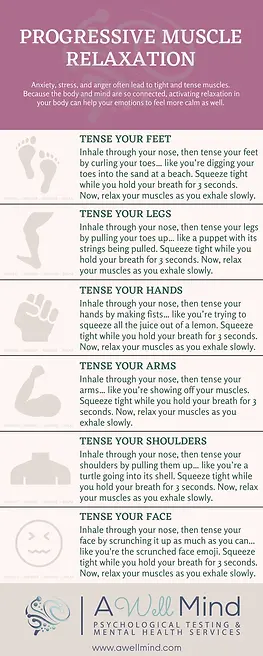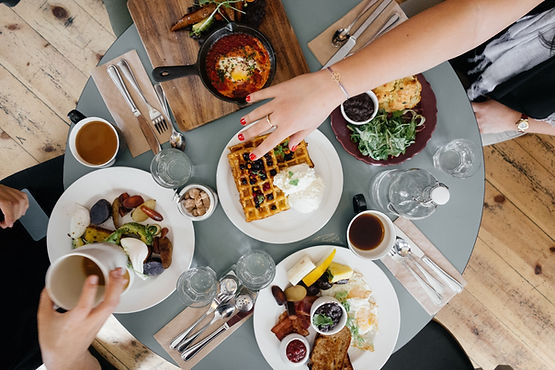Embodiment & Self Regulation: How to Reclaim Body Trust and Heal Your Relationship with Food
Have you ever felt disconnected from your body, as if you’re just a “floating head” navigating the world? Many of us, especially those who have struggled with disordered eating, food fear, or body shame, know this feeling all too well. We learn to suppress hunger cues, silence emotions, and override bodily sensations—believing that discipline and control are the keys to health and happiness.
But what if true well-being comes from reconnecting with your body, rather than controlling it?
In Part 1 of this series, we explored emotional intelligence—the ability to recognize, understand, and respond to emotions in a way that fosters healing. If you missed that post, you can read it here. Now, we’ll dive into another crucial skill for food freedom and body trust: self regulation.

What Is Self Regulation?
Self regulation is often mistaken for willpower or self-control, especially in the context of diet culture. We’re told that resisting cravings, avoiding “bad” foods, and forcing ourselves into rigid routines are signs of self-regulation. But in reality, this misinterpretation leads to food obsession, guilt, and shame—the opposite of true regulation.
At its core, self regulation is not about restriction. It’s about responding to your thoughts, emotions, and physical sensations in a way that supports your well-being. Instead of shutting down feelings or ignoring body cues, self regulation helps you meet them with curiosity, compassion, and care.
Why Diet Culture Gets Self Regulation Wrong
One of the most famous self-regulation studies—the Stanford Marshmallow Experiment—suggested that children who could delay gratification (by resisting eating a marshmallow) had better life outcomes. This study fueled the idea that “good” self regulation means suppressing desires. But later research debunked this myth, revealing that self regulation isn’t about denying pleasure—it’s about navigating impulses in a way that aligns with your needs and values.

Diet culture twists this concept, promoting restriction as a virtue. But ironically, the more we try to resist certain foods, the more we fixate on them. This psychological phenomenon, known as habituation, shows that when we allow all foods, the urgency to overeat diminishes.
The Hidden Costs of Food Restriction
If you often feel out of control around food, ask yourself:
- Am I restricting certain foods (physically or mentally)?
- Do I compensate for eating by over-exercising or cutting calories later?
- Am I afraid of weight gain or body changes?
What feels like “food addiction” is often a natural response to deprivation. The cycle of restriction → obsession → overeating → guilt is fueled by an unmet biological and psychological need. You are not broken. You don’t lack willpower. You need nourishment, safety, and self-trust.
How Self Regulation Bridges the Mind & Body
Self regulation and emotional intelligence work together to help us respond to life’s challenges. First, we notice an internal experience—a thought, feeling, or bodily sensation. Then, we choose how to respond, rather than react impulsively.
But to do this effectively, we must understand our nervous system. Many of us instinctively avoid discomfort, whether it’s a difficult emotion or an unpleasant body sensation. However, what we resist persists. By learning how to regulate our nervous system, we can stay present, grounded, and compassionate toward ourselves—even in stressful moments.
How Perception Shapes Stress & Eating Habits
Your perception of a situation—not the situation itself—determines your stress response. Consider these common holiday worries:
- Eating foods you don’t usually eat
- Fear of holiday weight gain
- Anxiety about body comments from family
- Less time to exercise
Simply reading these might trigger stress. But why? Because of the beliefs and stories you’ve attached to them. Your thoughts about food, weight, and worthiness shape your emotional responses.
- Food is not inherently stressful. It’s fuel for your body.
- Exercise is not stressful. It’s movement.
- Weight changes are not inherently good or bad. Your value is not tied to a number.
Shifting how you perceive food and body changes is a key part of self regulation.
Understanding Your Nervous System: The Key to Self Regulation
Your nervous system constantly scans for threats. When it perceives danger (real or imagined), it triggers fight, flight, freeze, or fawn responses.
- Top-Down Regulation: Your thoughts influence your body. (Example: Thinking “I’m not safe” can trigger physical tension.)
- Bottom-Up Regulation: Your body influences your thoughts. (Example: Deep breathing can signal safety to your brain.)
When we feel threatened—like receiving a negative comment about our body—our prefrontal cortex (PFC), the part of the brain responsible for logical thinking receives less energy. This is why stress can make us react impulsively.
But you can train your body to regulate these responses, calming the nervous system so you can respond with clarity instead of reactivity.
I’ve borrowed this beautiful image below to help illustrate these levels of communication.

We will often notice a change in our bodies first. For example, we feel our hearts beat faster, tension creep into our shoulders, or our stomachs tighten up or get fluttery. The sensations will vary for each of us, but tension is present.
On the other hand, we might notice an inability to focus or concentrate, racing thoughts, restlessness, or agitation. That tension can be an indicator light, just like you’d notice on your car dashboard that says, “check in.” Just like you’d pause and ask, “what’s happening here?” with your vehicle, you can do the same for yourself.
A Self Regulation Exercise to Reconnect with Your Body
Try this simple self-regulation practice to check in with yourself:
- Close your eyes and scan your body from head to toe.
- Notice areas of tension—your forehead, jaw, shoulders, stomach.
- Breathe deeply into those areas, allowing them to soften.
- Gently release tension—drop your shoulders, relax your jaw, unclench your fists.
- Repeat a grounding phrase, such as “I am safe” or “I am allowed to take up space.”
For many of us, reconnecting with our bodies takes time. If it feels unfamiliar, start small. Regular check-ins help rebuild body trust and promote self regulation.
A Real- Life Example
Let’s pretend you’re with your family, and you receive a comment about your body. Uncomfortable, sure. But also, are you safe? Is your life at risk? (Please know that I am not minimizing the impact of what can often feel very emotionally abusive). Comments obviously can sting, and I would advocate for you practicing setting boundaries if you are moving into a situation where this could happen! But on a very real level, your life is safe. Remind yourself of this. Gently repeat to yourself, “You are safe… you are safe…” sends a message to your body, that it can relax (i.e., top-down).
When we can move into this calmer space, we can think more clearly, logically, creatively, linearly, and we are much better problem-solvers. You are operating primarily within the parasympathetic nervous system space when you are here.
The Connection Between Self Regulation & Self-Compassion
If you’re constantly criticizing yourself, you’re keeping your nervous system in a state of threat. Even if you practice regulation techniques, self-judgment creates an ongoing stress response.
So here’s the real question: Instead of just calming your body after distress, what if you removed the source of the distress altogether?
The way we talk to ourselves matters. Self-compassion is a core part of self regulation. When we replace self-criticism with kindness, we create an internal environment where healing can truly happen.
Use Progressive Muscle Relaxation to Increase Self Regulation
For many of us, we have been so cut off from our bodies for so long, we have difficulty accessing how they feel. You can use a practice called Progressive Muscle Relaxation to intentionally create more tension in each of these areas and notice the difference! For example, pick up your eyebrows so you can feel what that feels like. Make fish lips or purse your lips. Put a scowl on your face. After you intentionally tighten, then release.

If you’re a parent, practice this with your kids!
Engaging in these practices consistently (i.e., regular “check-ins,” acute relaxation exercises, and deep breathing), remind us we are safe and invite us to access the wisdom of our bodies.
Reflection Prompts:
- What did you notice when you checked-in with yourself?
- How are you coming to understand yourself better?
- In what situations do you feel reactive instead of responsive?
- Where do you want to practice self regulation more intentionally?
- What strategies have you used in the past to calm yourself? (Let’s pause and thank the body for being so wise as to know that it needs soothing, even if you are not thrilled about the behaviors).
I’d love to hear about your experience with self regulation. Remember: Change takes time, effort, and practice. Be patient and kind with yourself.
Do you need support healing your relationship with food? Let’s work together. 💜
Check out my The Confident Coping Without Food System, a 16-week online coaching program with built-in support, a virtual community, and weekly support designed to liberate you from rigid dieting practices so you can take your control back and experience greater peace with food and your body.
Check out my online, self-paced course, End Emotional Eating & Change Your Relationship with Food, that over 500 students have taken, is top-rated, and jam-packed with resources to support your development of new skills!
I also offer virtual one-on-one coaching– learn more about my Liberated Life Coaching or Nutrition & Lifestyle Coaching options.
Click here to subscribe to my newsletter for tools and strategies for living your healthiest life!





